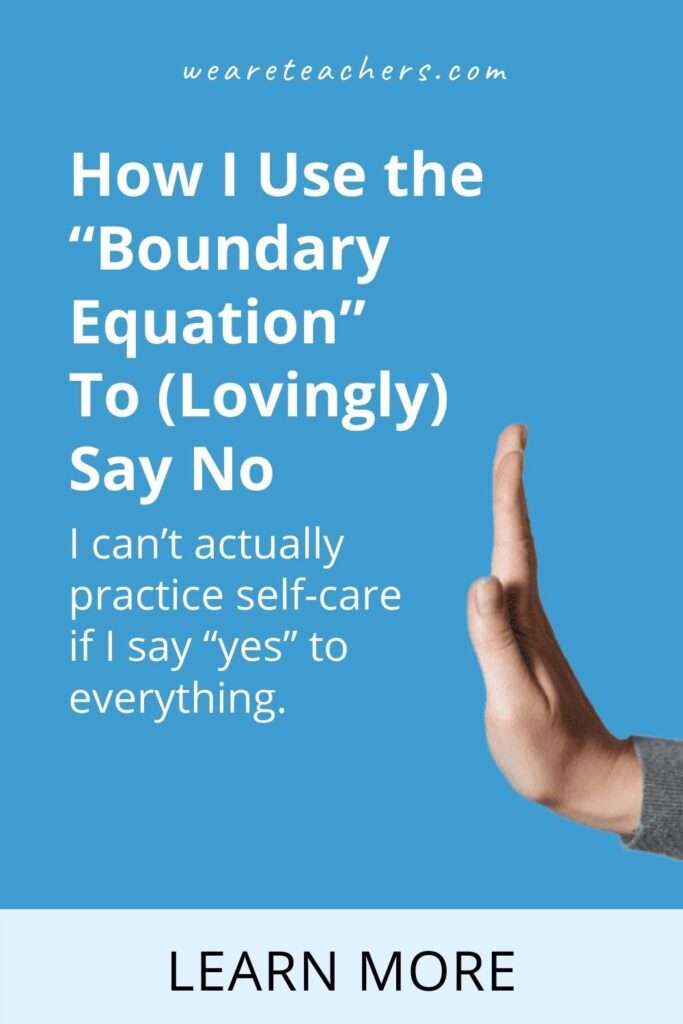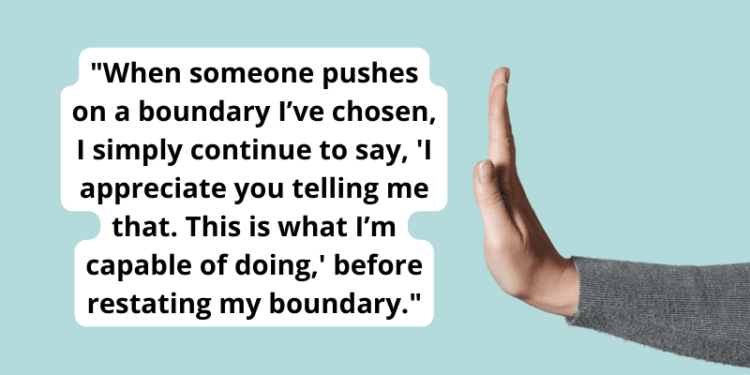Like a lot of teachers, one of my biggest sources of happiness is making other people happy.
As a kid, nothing pleased me more than volunteering for a classroom job, and nothing broke my heart more (and made me cry) than feeling like I had disappointed someone.
My people-pleasing tendencies continued into adulthood, where yeses became the currency I doled out to seek approval. Could I lead a hike for new teachers on my day off? Of course! Was I willing to take on that new club at lunch? Absolutely! In my mind, making people happy meant I was doing something right.
What I began to realize is that making other people happy sometimes came at the expense of my own needs.
Leading a hike meant I didn’t have time for a solo run, and letting kids into my classroom at lunch meant I lost the time I had at midday to recharge. Eventually, I became more tired and less present both in my classroom and outside of it.
And, like many teachers, I was told to practice “self-care.” It’s a current buzzword, particularly after difficult pandemic school years. Unfortunately, many people think they can give “self-care” to teachers by gifting scented candles or sending a meditation app. While those things can be nice—I love my Calm app!—actual “self-care” means focusing on myself. I can’t actually practice self-care if I say yes to everything.
Drawing clear boundaries is a much more difficult part of self-care practice that many people, especially educators, struggle with. Focusing on ourselves is already hard, but it’s especially hard in a profession whose culture is built around concepts of service or, even, sacrifice.
It took conversations with my therapist, lots of reading, and becoming a mom to realize my concept of boundaries needed to be reframed. I had always seen boundaries as creating distance. Instead, boundaries are a way of showing trust, care, and confidence. Setting clear boundaries means that I not only trust them to respect me but that I trust myself enough to know what I actually need.
The Boundary Equation
Once I saw boundaries in this way, it became easier to practice. The “no” didn’t have to feel mean. I use this equation: Appreciation/validation + a clear statement of my needs = healthy boundary. With students, I make it a point to validate their feelings as well as explain the reasons for my boundary. Here’s what it looks like in a few different scenarios:
You’re asked to participate in a new committee: “Thanks so much! I’d love to, but with my other commitments, I wouldn’t be able to engage in a meaningful way. It’s best if I pass.”
You’re selected to lead a Saturday morning training: “Thanks for asking. I’m not available, so let’s find another time.”
Students want to meet with you or stay in your room when you’re unavailable: “I appreciate that you want to be in here, but I need to prepare for class. Staying here is not an option.” Note: This year, I posted my classroom boundaries for my students so they had a clear understanding from the outset.
Being clear about my needs gives both of us the opportunity to have a deeper, richer relationship because they trust me to be transparent instead of just saying yes and not fully participating. I found most people understanding and appreciative of my honesty. Wringing someone’s arm doesn’t feel good.
When Others Don’t Honor Your Boundaries
Of course, there are times when the other person has still been insistent about crossing boundaries—including my students. This is when it’s important to remember that setting boundaries not only allows me to be fully present, but also models the practice for my child and students. I want my kid and my students to clearly and confidently state their boundaries as well, even when it feels hard to do so—including with me! I remember this when someone pushes on a boundary I’ve chosen, and simply continue to say, “I appreciate you telling me that. This is what I’m capable of doing,” before restating my boundary.
It’s also important to remember every situation is nuanced. There are times when I have to work outside of the normal boundaries I set for myself because the context calls for it, and there are a few occasions where, if I’m the adult in the situation, I’ve pushed past boundaries (my kid sometimes doesn’t like diaper changes, and yet …). I focus more on boundaries as a way for us to use a sense of shared respect and care of my and others’ needs.
While there are times it feels tempting to still “sacrifice,” I remember that if I’m burnt out, it actually hurts my ability to care for others. People who know I’m in a role of caring for others should want me to prioritize self-care (the real kind). That’s the kind of relationship that is best not only for our students but for everyone in our community as well.
What kinds of boundaries do you set as a teacher? Let us know in the comments!





















